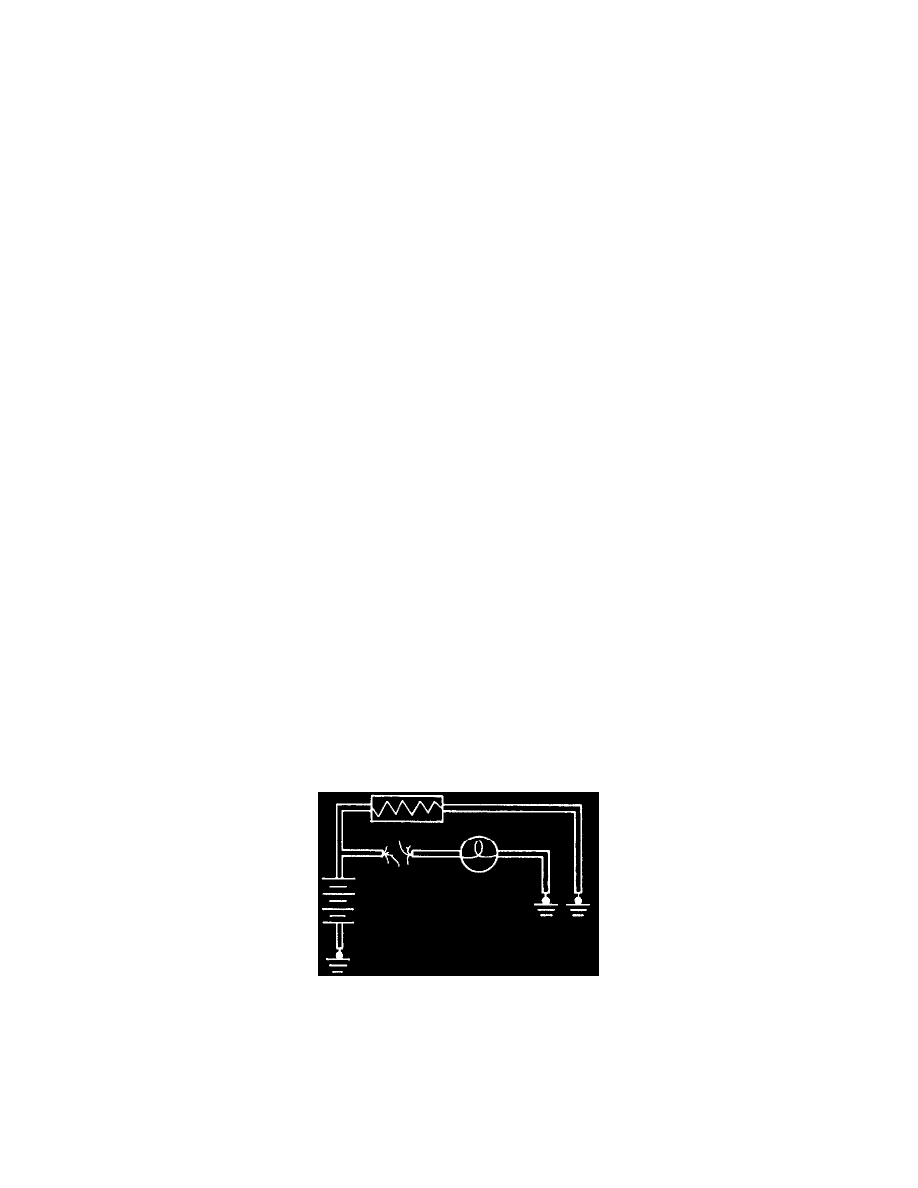Lumina V6-191 3.1L VIN T MFI (1993)

Fig. 7 Deformation of a Typical Metri-Pak Series Female Terminal
DESCRIPTION
When diagnosing an electrical system that utilizes Metri-Pack 150/280/480/630 series terminals (refer to GM Terminal Repair Kit, J 38125-A,
instruction manual, J 38125-4 for terminal identification), it is important to check terminal contact between a connector and component, or
between in-line connectors, before replacing a suspect component.
Frequently, a diagnostic chart leads to a step that reads: "Check for poor connection." Mating terminals must be inspected to assure good terminal
contact. A poor connection between the male and female terminal at a connector may be the result of contamination or deformation.
Contamination is caused by the connector halves being improperly connected, a missing or damaged connector seal, or damage to the connector
itself, exposing the terminals to moisture and dirt. Contamination, usually in underhood or underbody connectors, leads to terminal corrosion,
causing an open circuit or intermittently open circuit.
Deformation is caused by probing the mating side of a connector terminal without the proper adapter, improperly joining the connector halves or
repeatedly separating and joining the connector halves. Deformation, usually to the female terminal contact tang, can result in poor terminal
contact, see Fig. 7, causing an open or intermittently open circuit.
PROCEDURES:
Follow the procedure below to check terminal contact.
1. Separate the connector halves.
2. Inspect the connector halves for contamination. Contamination will result in a white or green build-up within the connector body or between
terminals, causing high terminal resistance, intermittent contact or an open circuit. An underhood or underbody connector that shows signs of
contamination should be replaced in its entirety: terminals, seals and connector body.
3. Using an equivalent male terminal from the Terminal Repair Kit, check the retention force of the female terminal in question by inserting and
removing the male terminal to the female terminal in the connector body. Good terminal contact will require a certain amount of force to separate
the terminals.
4. Using an equivalent female terminal from the Terminal Repair Kit, compare the retention force of this terminal to the female terminal in question
by joining and separating the male terminal to the good female terminal, and then joining and separating the male terminal to the female terminal
in question. If the retention force is significantly different between the two female terminals, replace the female terminal in question.
If a visual (physical) check does not reveal the cause of the problem, the vehicle may be able to be driven with a DVM connected to the suspected
circuit. An abnormal voltage reading when the problem occurs indicates the problem may be in that circuit.
General
There are three electrical conditions that can cause a non-working circuit: an "Open Circuit," a "Short Circuit" or a "Grounded Circuit." The break
can also be caused by intermittent or poor connections.
Open Circuit
Open Circuit
An open circuit occurs whenever there is a break in the circuit. The break can be corrosion at the connector, a wire broken off in a component, a
wire that burned open from too much current or a component nor operating as it should.
Short Circuit
